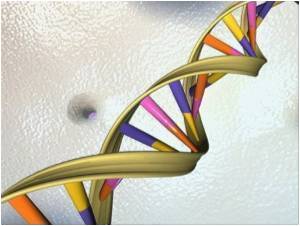A recent study finds that 96% of a chimpanzee's genome is the same as a human's, but it's the other 4%, and the vast differences that makes us more vulnerable to certain diseases such as cancer.

Georgia Tech's Soojin Yi looked at brain samples of each species. She found that differences in certain DNA modifications, called methylation, might contribute to phenotypic changes.
The results also hint that DNA methylation plays an important role for some disease-related phenotypes in humans, including cancer and autism.
"Our study indicates that certain human diseases may have evolutionary epigenetic origins. Such findings, in the long term, may help to develop better therapeutic targets or means for some human diseases," said Yi, a faculty member in the School of Biology.
DNA methylation modifies gene expression but doesn't change a cell's genetic information. To understand how it differs between the two species, Yi and her research team generated genome-wide methylation maps of the prefrontal cortex of multiple humans and chimps. They found hundreds of genes that exhibit significantly lower levels of methylation in the human brain than in the chimpanzee brain. Most of them were promoters involved with protein binding and cellular metabolic processes.
"This list of genes includes disproportionately high numbers of those related to diseases. They are linked to autism, neural-tube defects and alcohol and other chemical dependencies. This suggests that methylation differences between the species might have significant functional consequences. They also might be linked to the evolution of our vulnerability to certain diseases, including cancer," said Yi.
Advertisement
The research has been published in September's American Journal of Human Genetics.
Advertisement














